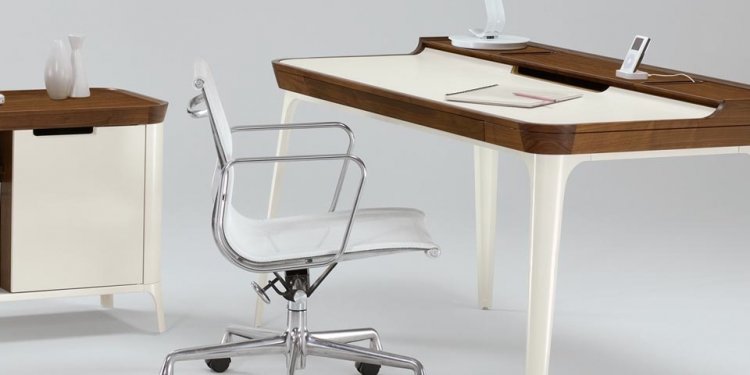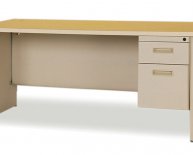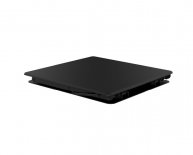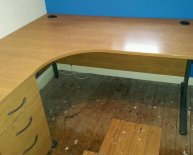
Deep Computer desk
Ergonomics
Most desks are 30-inches high, which may be fine for the average person, but not everyone. If possible, try out your prospective desk in person, in a chair that’s similar to one you use. Make sure you have enough leg room and the desk is the right height. For the latter, bend your arms at 90 degree angles and see if your hands rest comfortably on the desk, whether it’s a sitting or standing desk. Desks with adjustable leg heights are more versatile for this purpose. Also, you can use Ergotron's Workspace Planning Tool to find the proper measurements for either a sitting or standing desk based on your measurements.
You’ll also want to make sure that your chair can fit under the desk so you're not sitting awkwardly several feet away from your keyboard. Consider measuring your chair’s width and height (up to the armrests) so you can avoid any surprises.
Desk Shape
There are pros and cons to every kind of desk layout, whether you’re choosing a corner desk, L-shaped desk, U-shaped one, or a traditional rectangular desk. Make sure you not only pick one that fits your workstyle and space, but may also be adaptable in case you want to move to a different room. Some desk layout considerations:
- An armoire, for example, works well in the bedroom or open spaces because you can close up the desk as the end of the day. However, they don’t offer a ton of surface space.
- U-shaped desks let you stretch out and create different work zones while keeping everything in reach, but they require lots of space.
- L-shaped desks offer many of the benefits of U-shaped ones while requiring less space. However, depending on the desk, you might be stuck with just one placement in your room.
- A corner desk is space saving and fits in different room layouts, but you’ll be stuck facing a corner, usually with your back to the door.
- Straight desks are the most common and versatile for placement (against a wall or in the middle of the room). They don’t always offer the most surface space, however.
Whichever shape you prefer, make sure you know the measurements of your room and the desk’s measurements so you can be sure the desk will fit properly and won't impede traffic flow, etc.
Storage and Working Surface
Some desks, frankly, are not very functional. They might be high in (minimalist) style, but low on storage and organization—or vice versa.
Consider what you like or dislike about your current desk. Wish there were more drawers for your supplies? More surface space to accommodate multiple monitors? Think about what you’re going to place on the desk and how much of a messy desk person or neatnik you are.
- A pull-out surface. This essentially turns a rectangular desk into an L-shaped one temporarily.
- Computer compartment. Some people like these because they tuck the desktop tower away, but on the other hand, these could cause airflow problems.
- Holes or channels for cords.
- Hutch. Built-in hutches offer a ton of storage, but when they’re attached to the desk they limit where you can place it and you’re stuck with the hutch.
- Drawer placement. Do you want them on the left or the right?
Construction and Quality
As for the actual material of the desk and its desk surface (wood or metal, etc), that’s largely a matter of style, although there are also practical considerations.
Material: Business Know How says that laminate is a popular choice because it’s affordable and durable, but you should look for a thick, high pressure laminate. (Very cheap laminate desks, I can attest, are not worth the money or trouble.)
Metal or steel desks are more durable. Test the overall quality of these kinds of desks, the article says, by feeling the desk’s overall weight.
Wood or veneer are a more classic choice but the surface nicks more easily.
Quality: To gauge the quality of a desk, look at the drawers. They should slide easily and the rollers should be sturdy. Business Know How also notes:

















